|
August Article
|
Big Storms, High Water, and Resilient Native Plants
Earlier this month, I had a chance to stay at a friend's cabin on North Long Lake near Brainerd. A day prior to our trip, a squall line ripped through central Minnesota, producing 90 mph straight-line winds and 4 to 6 inches of rain. With saturated soil conditions from previous storms, mature trees were not able to withstand the punishment. On our way to the cabin, we met teams of utility workers challenged with sorting out the layers of downed trees snarled with a matrix of power lines. Fortunately, the cabin was spared. But the shoreland was dealing with unusually high lake levels and angry white-caps relentlessly pounding the water's edge.
Will this be the new norm in Minnesota? Nobody knows for sure. But this summer has certainly been sultry, and has fueled some very high-energy storms. July went down as being the warmest month on record by NOAA (National Oceanic and Atmospheric Administration). During an average summer, we have 11 days over 90 degrees in the Twin Cities. We have already surpassed this number, with another warm-up forecast later this week. Rain totals are above average as well. The typical monthly rainfall amount in the summer is about four inches. This year, we have received more than that in a single rain event in August. It seems that the intensity of our summer rainfall is becoming more substantial, which increases the probability of flooding and erosion.
A reasonable question to ask is: What can we do to address these apparent changes that we are experiencing in our environment? Well, on a large, long-term scale, we may want to consider efforts to address climate change. For instance, we can look at ways to reduce our fossil fuel consumption and endorse leaders with the same philosophy. On a local scale, we can assess our landscape and figure out how to best manage these big storm events. In general, native plant communities are more resilient and able to withstand intense storms and high waters.
Last week, we received a call from a shoreland owner that noticed some pretty substantial bank slumping that occurred on their turf-grass slope. With the saturated soils from the recent heavy rains, the shallow turf root systems were not able to hold the bank in place. We are now looking at options to introduce a diverse native plant community, with deep root systems (some up to 12 feet in depth), to help to hold the steep slope and withstand high-intensity rain events. This client will benefit from natural erosion control, and in addition, also provide an attractive habitat for wildlife and pollinators.
North Long Lake, along with a multitude of other Minnesota lakes, are experiencing high water this summer. Shores that support a mix of emergent, shore edge (saturated soils), and upland native plant communities are best outfitted to deal with water level extremes. If you are considering adding native species to your shore, take a look at undisturbed natural shores on your lake close to your property. What species are doing well? If the shore conditions are similar, there is a very good chance that these species will work nicely on your property. A few species that we often see on natural shores in the Twin Cities are blue flag iris, lake sedge, prairie cordgrass, and swamp milkweed.
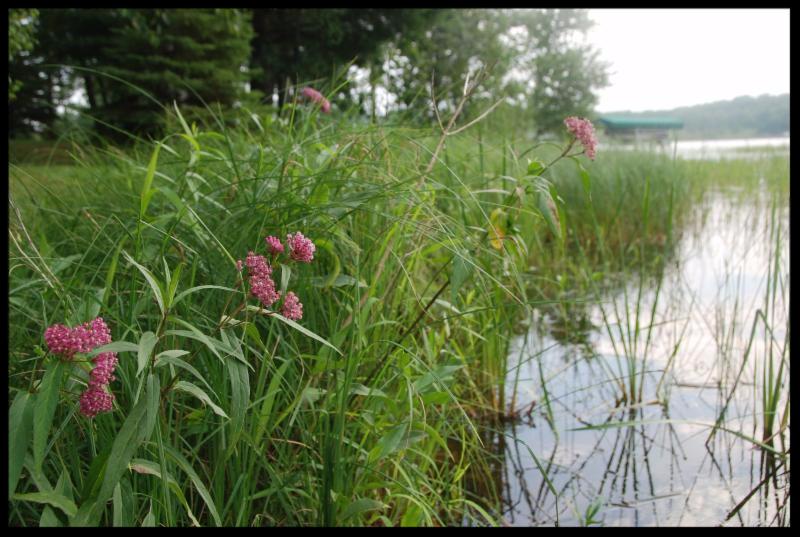
An effective way to manage storm
water is by infiltration. Over the last 10 years, thousands of rain gardens and infiltration swales have been installed to reduce storm water runoff. Collectively, these "best management practices" (BMPs) work to combat excessive rain events by collecting, and directing water into the ground. Often, rain gardens and natural swales are planted with a mix native wetland and upland species. These plants are well equipped to deal with water inflow, look great, and also provide hotspots for pollinators. It's a win-win for natural resources management.
Whether you are up in Brainerd or here in the Twin Cities, be assured that native plant communities are an excellent tool to use for handling our weather extremes. In addition to water management and erosion control, you have the ability to create interesting, beautiful, and quite essential native habitats. Please give us a call today to discuss your ideas and how we can help your natural areas vision become a reality.
|
Natural Shore Has Moved!
We have moved a mile from our Maple Plain location to a new office in neighboring Independence, MN. Our new location will allow us to better serve our clients' needs.
Our new retail nursery address is:
1480 County Rd 90. Independence MN 55359
Interested in Native Plants? Contact our Greenhouse Manager Jill at [email protected] |
|
Native Plant of the Month
|
Swamp Milkweed 
Asclepias incarnata
Moisture: Wet or Moist
Exposure: Full Sun
Color: Pink
Bloom: June-August
Height: 3-4 Feet
Clump-forming plant blooming in early to mid-summer with clusters of fragrant pink to mauve flowers. Plant has deep a taproot, which makes it hard to transplant once established. When bruised the plant oozes a milky sap. After fertilization, a green pod develops; later releasing flat brown seeds with tuffs of silky-white hairs for wind dispersal. Grows in swamps, wet prairies, and ditches; although tolerant of well-drained soils in gardens. Flowers, containing lots of nectar, are food plants for monarchs and other butterflies. The plant serves as a larval plant for monarch larvae. Other common names are marsh milkweed, red milkweed.
|
|
Invasive Plant of the Month
|
Purple Loosestrife
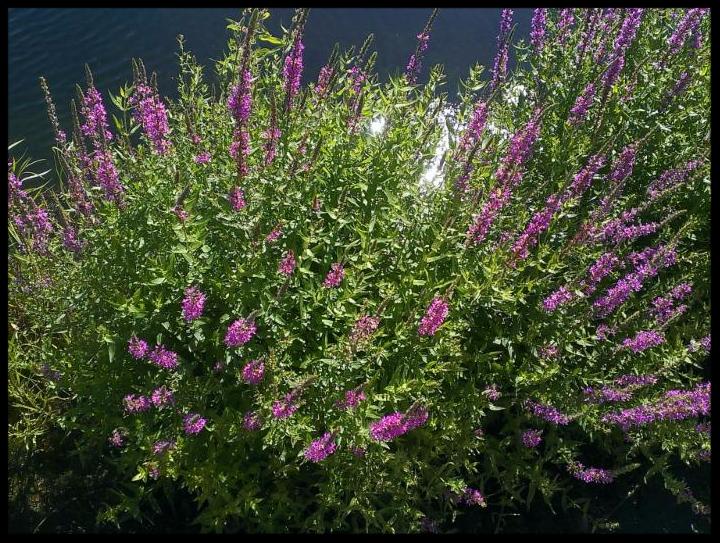
Lythrum salicaria
Exposure: Sun
Moisture: Wet or Moist
Height: 2-6 Feet
Blooms: July-September
Color: Purple/Pink
Purple Loosestrife is originally from Eurasia and
escaped from the ornamental trade. It is on the prohibited weed list in Minnesota because it is extremely aggressive and does very well in Minnesota's lakes and wetlands. A single plant can produce millions of seeds each year! It has very attractive pink flowers that are grouped on a long spike. Its stems are square and woody towards the bottom. It can have one or two spikes or look very bushy with multiple stems like the picture above. Leaves can vary in color and orientation on the stem. They are about four inches long and rounded at the stalk but pointed at the tip. Management strategies include cutting and treated the stems or foliar application of herbicide.
Native plant alternatives include Meadow Blazing Star or Blue Vervain!
|
Monarch Butterfly
 |
|
 |
Adult Monarchs on Blazing Star
|
Danaus plexippus
Range
: Southern Canada to the northern areas of South America.
Habitat
: Prairies, gardens, open fields
Identification
: The tops of adult Monarch wings have a distinctive orange coloring with black veins and white spots around the tips of the wings. The underside of their wings are a lighter orange and their bodies are all black except for more white dots on their faces and underside. Caterpillars have white, yellow, and black stripes with black
 |
|
 |
Monarch caterpillar on Swamp Milkweed
|
antenna.
Pollination
: The adults feed on milkweed nectar and lay eggs on the underside of the leaves. The caterpillar eats the milkweed leaves and flowers until they are big enough to make a chrysalis. There are multiple species of Milkweed that these beautiful butterflies love, Swamp Milkweed, Butterfly Weed, Common Milkweed, and Whorled Milkweed are just a few! The adults also feed on nectar from many other native plants. A few of their favorites are listed on the side column to the right!
Unfortunately Monarch populations have been declining dramatically for years. Make sure you plant a lot of milkweed in your yard this season! But remember, it is important to make sure it is native to this region!
|
|
|
Our retail nursery is open f
or the 2016 season! Want to place a plant order? Contact Jill at [email protected]
Click and visit our website for current
|
Monarchs!
Milkweed is important for their larval stage while other native plants are great sources of nectar for adults!
1. Swamp Milkweed (
Asclepias incarnata) 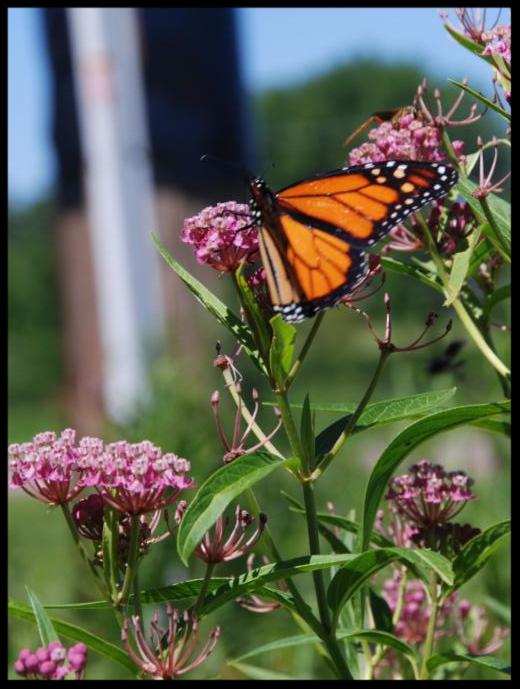
Wet/Moist, Full Shade, Pink, 3-4 ft.
2. Butterfly weed (
Asclepias tuberosa) 
Moist/Dry, Sun or Part Shade, Orange, 1.5-2 ft.
3. Meadow Blazing Star (
Liatris ligulistylis) 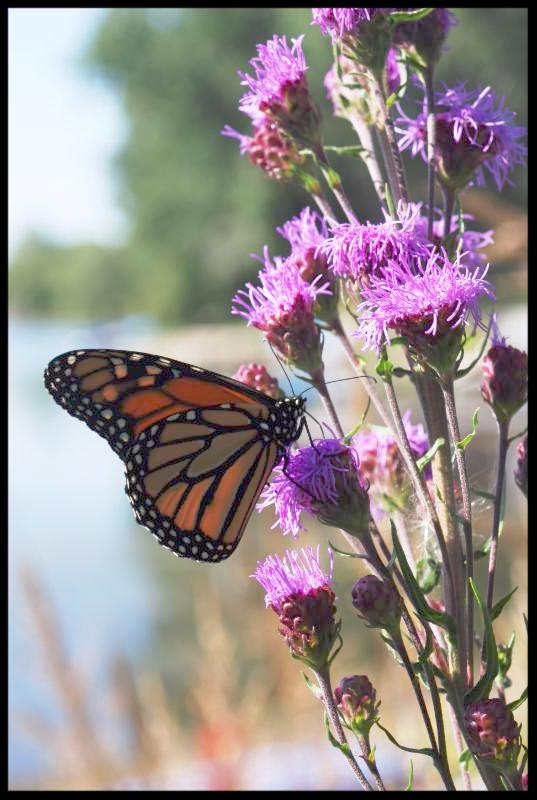
Moist, Sun or Part Shade, Purple, 1-3 ft.
4. Prairie Blazing Star (Liatris pycnostachya) 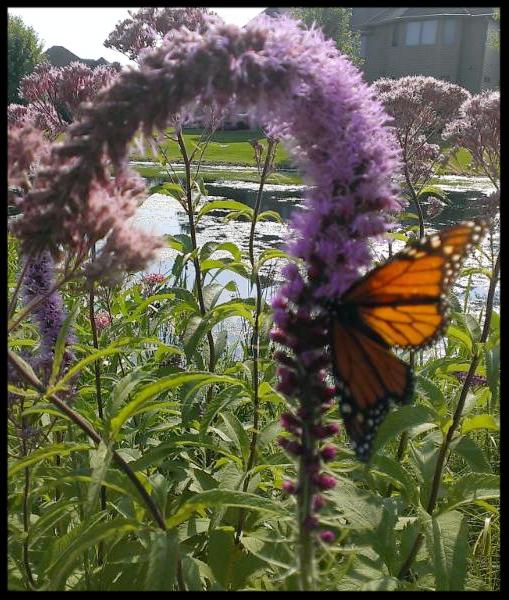
Wet/Moist, Sun or Part Shade, Purple, 2-5 ft.
5. Pale Purple
Coneflower (
Echinacea pallida) 
Moist/Dry, Sun or Part Shade, Pink, 2-4 ft.
|
|
 |
|